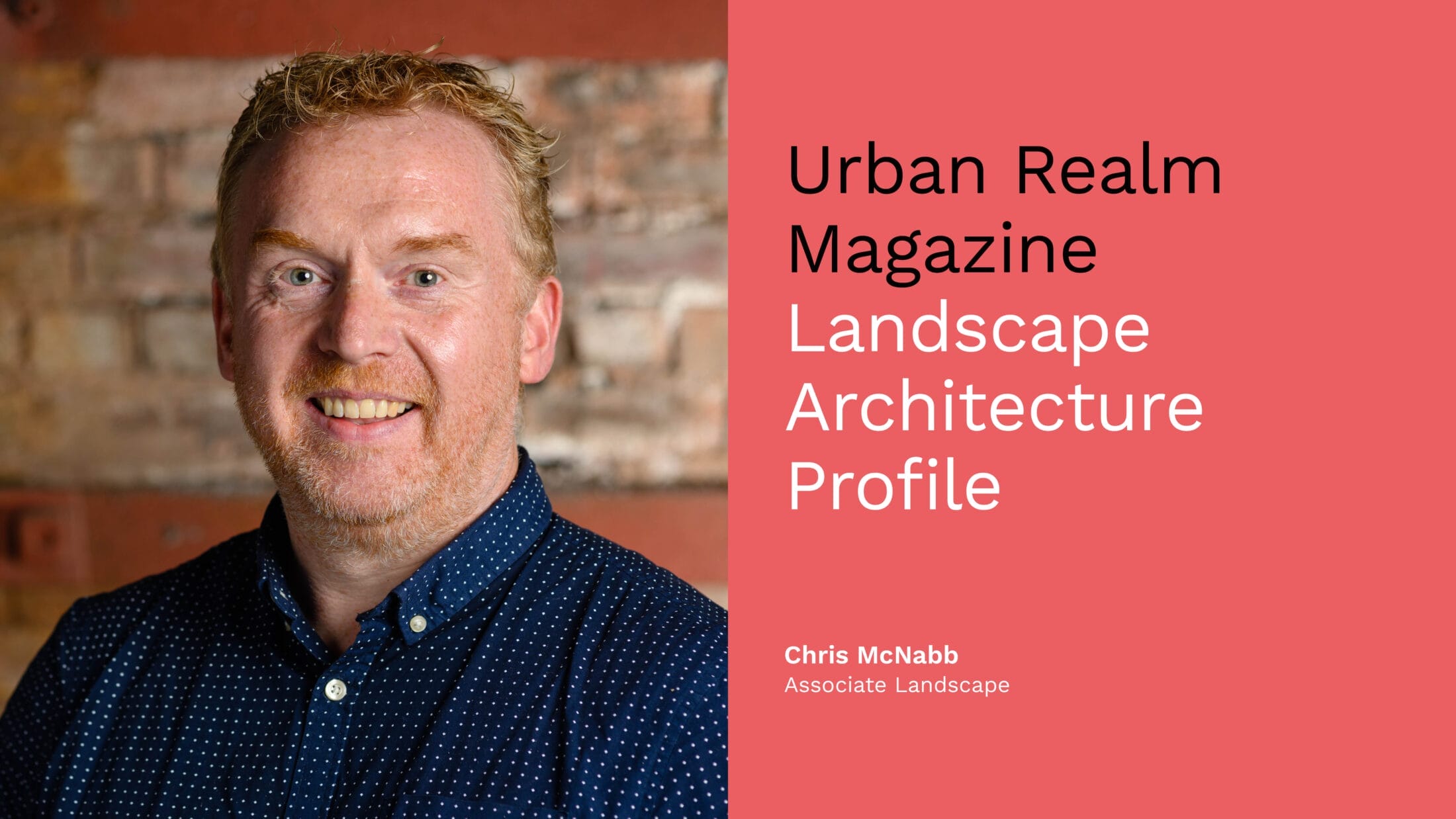
Chris McNabb recently spoke to Urban Realm magazine – the leading magazine for the architectural, design and specifying industries in Scotland. A colourful, vibrant and contemporary magazine, if you haven’t seen the latest addition, you can read what Chris had to say below.
Urban Realm magazine asked:
What are the placemaking principles that guide you?
The main placemaking principle that guides me is ‘Genius loci’ or the spirit of the place. As landscape architects it’s critically important that we positively respond to a site’s unique qualities in terms of its history, climate, current use and its potential. We must not only respond to its characteristics but also immerse ourselves in the stories, people and vitality of a place. Far too often we see ‘cut and paste’ site proposals, but one size does not fit all. We must challenge ourselves to ensure that we enhance the qualities of a site or breathe new life into sites that have seen better days.
What role is landscape architecture playing in reducing carbon emissions?
As landscape architects, we play a pivotal role in reducing carbon emissions. Aside from the wealth and diversity of planting measures that we integrate within our projects we are continually researching new design solutions and materials that have low carbon footprints for our projects. It’s important that we work hand in hand with product suppliers and contractors to ensure proposed materials are fit for purpose and dovetail with modern methods of construction. We are currently working on several net zero carbon schools’ projects where we are researching practical solutions that not only assist with reducing carbon emissions but will also be first hand educational tools for the school staff, pupils and surrounding communities.
What is the proudest achievement of the past year?
My proudest achievement over the past year has been working as the lead landscape architect on the NMIS development for the University of Strathclyde. The landscape design delivers a range of climate mitigation and adaptation solutions. It features rain gardens, rainwater harvesting, SUDS and a green roof to encourage biodiversity. Inside the building a high-quality, healthy workplace with extensive natural daylight, an exposed timber glulam frame, internal tree planting, and a bespoke internal green wall that brings the outside in.


